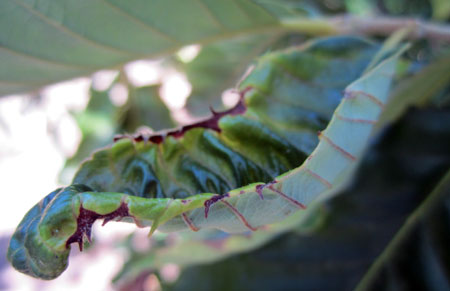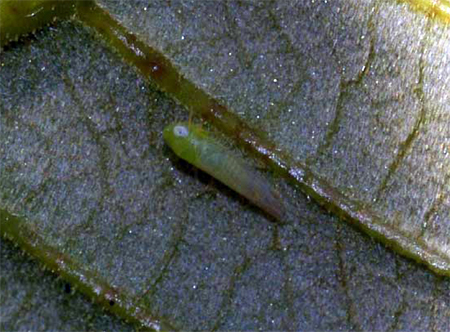Potato leafhoppers likely to arrive in chestnut orchards soon
With the stormy weather the last few days and more in the forecast, potato leafhoppers are likely to arrive in Michigan soon. Chestnut growers should be scouting to detect their arrival.
It’s that time of the year! Potato leafhoppers are arriving around Michigan with the first grower reporting potato leafhoppers in an orchard this afternoon, May 31, 2013. Like many plants, chestnuts are sensitive to the saliva of potato leafhoppers that is injected by the insect while feeding. Damage to leaf tissue can cause reduced photosynthesis, which can impact production and quality and damage the tree.
At this point in the season, scouting should be performed following storm systems originating in the southern United States. Early detection is important to prevent injury. For every acre of orchard, growers should select five trees to examine and inspect the leaves on three shoots per tree (a total of 15 shoots per acre). The easiest way to observe potato leafhoppers is by flipping the shoots or leaves over and looking for adults and nymphs on the underside of leaves. Pay special attention to succulent new leaves on the terminals of branches. Growers may also hang yellow sticky traps in the orchard to catch potato leafhoppers. Be sure to hang traps on both the edge and interior of the block.
For more information on how to identify potato leafhoppers and symptoms of damage, as well as management recommendations, please refer to the Michigan State University Extension article “Potato leafhopper management in chestnuts.”



 Print
Print Email
Email






